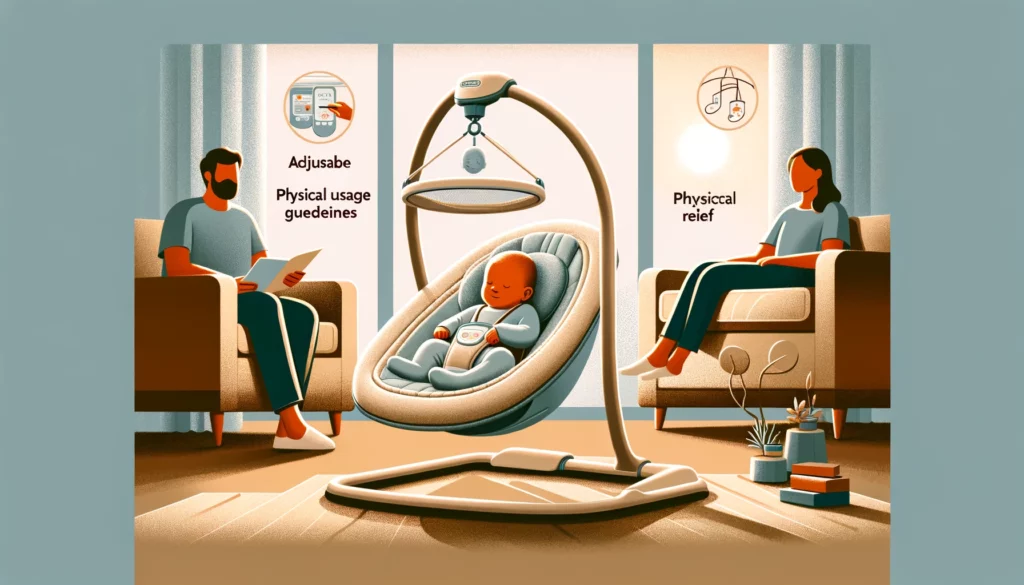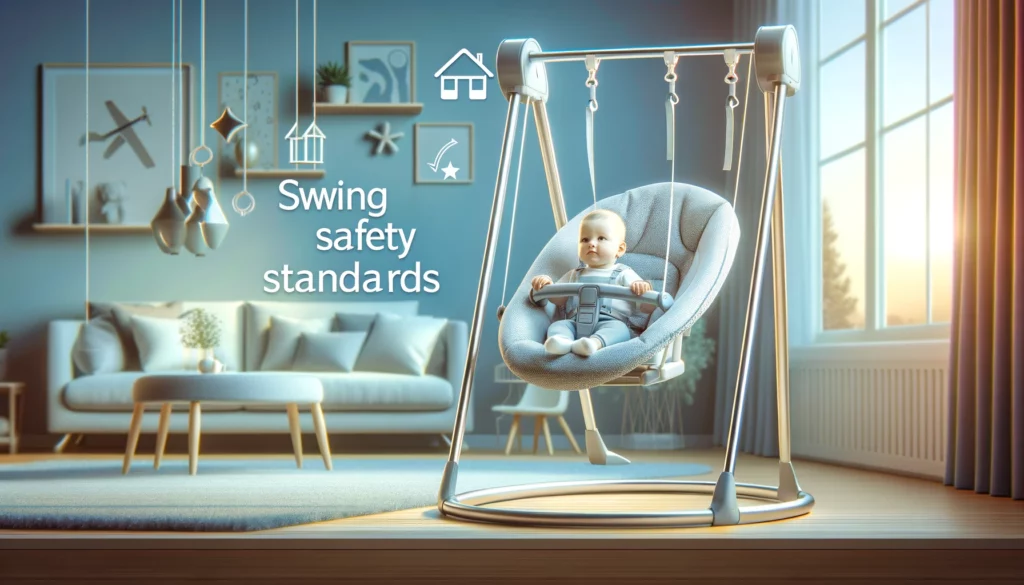When my little one arrived, the overwhelming joy was quickly tempered by the reality of constant soothing, rocking, and comforting. Among the many pieces of baby gear that promised some reprieve, the baby swing stood out. They’re a staple in many households, but it’s critical to understand their benefits, safe usage, and the impact on infant development.
So, what are the benefits and safety of baby swings?
| Key Aspect | Takeaways |
|---|---|
| Soothing for Fussy Babies | – Swings can calm infants, allowing them peace to process emotions. – Recommended by the American Academy of Pediatrics. |
| Physical Relief for Parents | – Swings provide a secure place for the baby, giving parents a break. |
| Safe Usage Guidelines | – Follow manufacturer instructions regarding safety belts, weight limits, and operation. – Always supervise the baby in the swing, ensuring they are awake and safety belts are fastened. – Avoid letting babies sleep in the swing. |
| Developmental Considerations | – Use swings in moderation to avoid over-reliance. – Balance swing time with tummy time and interaction for healthy development. |
| Potential Risks and Misuse | – Misuse can lead to unsafe sleep practices and increase SIDS risk. – Sleeping in a swing can compromise breathing. – Designate safe nap spots like a crib or bassinet. |
| Alternatives to Baby Swings | – Bouncer seats, carriers and wraps, floor play, rockers, and gliders. – Choose based on baby’s preferences and family lifestyle. |
| Balancing Convenience and Development | – Balance swing use with interactive play. – Swings are part of the daily routine, not a substitute for nurturing and engagement. |
| FAQs | – Swings are good in moderation but should not replace floor play. – Safe for newborns with proper recline and supervision. – Ideal age is birth to 8-9 months. – Moderate use aids in brain development. |
Benefits of Baby Swings: A Soothing Embrace for Babies
Safe and Comfortable Environment
A baby swing is more than just a seat; it’s a nurturing nook for your child. The gentle sway mimics the soothing motion they felt in the womb, providing a familiar comfort.
Soothing for Fussy Babies
As the American Academy of Pediatrics often indicates, a swing can significantly calm a squalling infant, allowing them peace to process their small but intense emotions.
Physical Relief for Parents
Let’s not forget parents and caregivers. Holding a baby non-stop isn’t feasible. A swing offers a secure place to lay your baby down, giving your arms—and back—a much-needed break.

Safe Usage Guidelines
Following Manufacturer Instructions
Safety belts, weight limits, and operation instructions are not merely suggestions but essential rules to ensure your baby’s safety.
Supervised and Awake Use
| Always | Action |
|---|---|
| 🔒 | Fasten safety belts securely |
| 🚫 | Do not let babies sleep in the swing |
| 👀 | Keep a vigilant eye on them when in the swing |
Developmental Considerations
While swings can be a source of contentment for infants, experts suggest moderation to avoid over-reliance which could impact developmental milestones. Balancing swing time with tummy time and interaction is key.
Potential Risks and Misuse of Baby Swings
Even with the tranquility they bring, baby swings come with their set of risks, especially if not used as intended. It’s imperative to be aware and proactive against potential dangers.
Hazards of Misuse
Unsuitable use of baby swings can lead to unsafe sleep practices, which can increase the risk of Sudden Infant Death Syndrome (SIDS). Sleeping in a swing is perilous because it can cause the baby’s head to tilt forward, leading to compromised breathing. Here are essential guidelines to mitigate risks:
- Never let a baby sleep: Swings are not designed for prolonged slumber or unsupervised use.
- Stay within view: Parents should always keep an eye on their infants while using the swing.
- Designated nap spots: A firm, flat surface is the safest spot for infants to sleep, like a crib or bassinet, not an inclined swing.
By being vigilant with swing use and positioning, parents can provide a safe and enjoyable experience for their babies.
Alternatives to Baby Swings
While baby swings can be a life-saver for some parents, they are not the only option when it comes to creating a soothing environment for your little one. Here are alternatives that also promote healthy development:
- Bouncer Seats: Similar inconvenience, though they offer a different motion.
- Carriers and Wraps: Keep your baby close while allowing mobility for the caregiver.
- Floor Play: Engaging with toys during tummy time aids in muscle development.
- Rockers and Gliders: Provide manual rocking that can be comforting to babies.
Finding the right tool requires understanding your baby’s preferences and needs, along with considering what works best for your family’s lifestyle.
Swing Smart: Balancing Convenience and Development
When we talk about convenience and comfort, swings certainly have a persuasive edge. However, balancing their use with your baby’s developmental needs is crucial. Integrate time in the swing with interactive play to support motor, cognitive, and social skills. Acknowledge that while the swing can offer a moment of solace, it cannot substitute the nurturing touch and engagement a parent provides.
In essence, think of the swing as one ingredient in the complex recipe of your child’s daily routine, and not the main dish. Now, let’s swing into some FAQs that parents commonly ponder.
FAQs
Are baby swings good for babies’ development?
Baby swings can provide soothing benefits for your baby, but they should not be used excessively. Over-reliance on swings may hinder motor development and muscle strengthening that come from floor play and tummy time.
Is it OK to put a newborn in a swing?
It is generally safe to put a newborn in a swing, if it reclines fully to prevent slumping over, which can obstruct their breathing. Yet, always follow the specific age and weight guidelines provided by the manufacturer.
What age is appropriate for baby swing?
The appropriate age for a baby swing is typically from birth to around 8 or 9 months, or until the baby can sit up unassisted, reaches the manufacturer’s recommended weight limit, or shows disinterest. Always consult the swing’s manual for accurate advice.
Is swing good for baby brain?
Moderate use of a baby swing can provide a calming experience for babies, potentially aiding in brain development by exposing them to new perspectives and motions. Nevertheless, direct interaction and playtime with caregivers are essential for optimal brain development.
Using this knowledge, parents can make informed decisions about how and when to use baby swings, ensuring that their little ones reap the benefits while growing and developing healthily.

